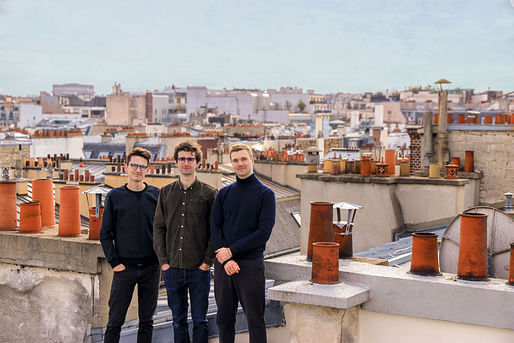

A new startup born out of the MIT School of Architecture and Planning has developed a green roof concept aimed at improving the quality of life of Parisians while addressing a host of environmental and urban health concerns for the ancient city of 2.1 million.
Roofscapes is the brainchild of Master of Architecture students Eytan Levi, Olivier Faber, and Tim Cousin. The trio all hail from France and met while studying as undergraduates at the EPFL Lausanne. Together, they see the concept as a way to “unlock” the potential of the thousands of pitched roof structures throughout Paris that have for centuries gone unused.
“We knew we wanted to have an impact on the built environment that was different than what a lot of architectural firms were doing,” Faber told MIT News for a recent profile of the venture. “We were thinking about a startup, but mostly we came to MIT because we knew we’d have a lot of agency to grow our skills and competency in adapting the built environment to the climate and biodiversity crises.”
Once in Massachusetts, the opportunity to apply for funding through the school’s DesignX accelerator helped their idea for a timber-supported green platform that can be adapted to pitched roof structures of various sizes in order to achieve better biodiversity, reduce building temperatures, and even grow food for residents of the city, which is sorely lacking vegetation in critical areas. The idea has the potential to be applied at scales similar to those reached for in MVRDV's recent Het Nieuwe Instituut exhibition and could be an effective solution for other planning officials facing the ill effects of increased heat on the continent's urban environment.
“In European city centers, two-thirds of the roofs are pitched, and there’s no solution to make them accessible and put green surfaces on them,” Cousin explained. “Meanwhile, we have all these issues with heat islands and excessive heat in urban centers, among other issues like biodiversity collapse, retention of rain water, lack of green spaces. Green roofs are one of the best ways to address all of these problems.”
"We’re starting with Paris because all the roofs there are the same height, and you can really feel the potential when you go up there to help the city adapt,” he added.
Their solution will soon be on display on top of a former district hall building near the city’s center thanks to a grant made possible by a City of Paris resiliency program that proceeds a list of 60 buildings reserved for future retrofits once a series of test pilot projects can be completed.
“Global warming is becoming increasingly graspable, and we’re seeing a greater will from building owners and inhabitants,” Levi told MIT News, before speaking to the challenges of adapting the technology in context with the city's historic architecture. “People are very supportive of the notion that we have a heritage environment, but as the climate changes drastically, our building stock doesn’t work anymore the way it worked in the 19th century. It needs to be adapted, and that’s what we are doing.”
No Comments
Block this user
Are you sure you want to block this user and hide all related comments throughout the site?
Archinect
This is your first comment on Archinect. Your comment will be visible once approved.